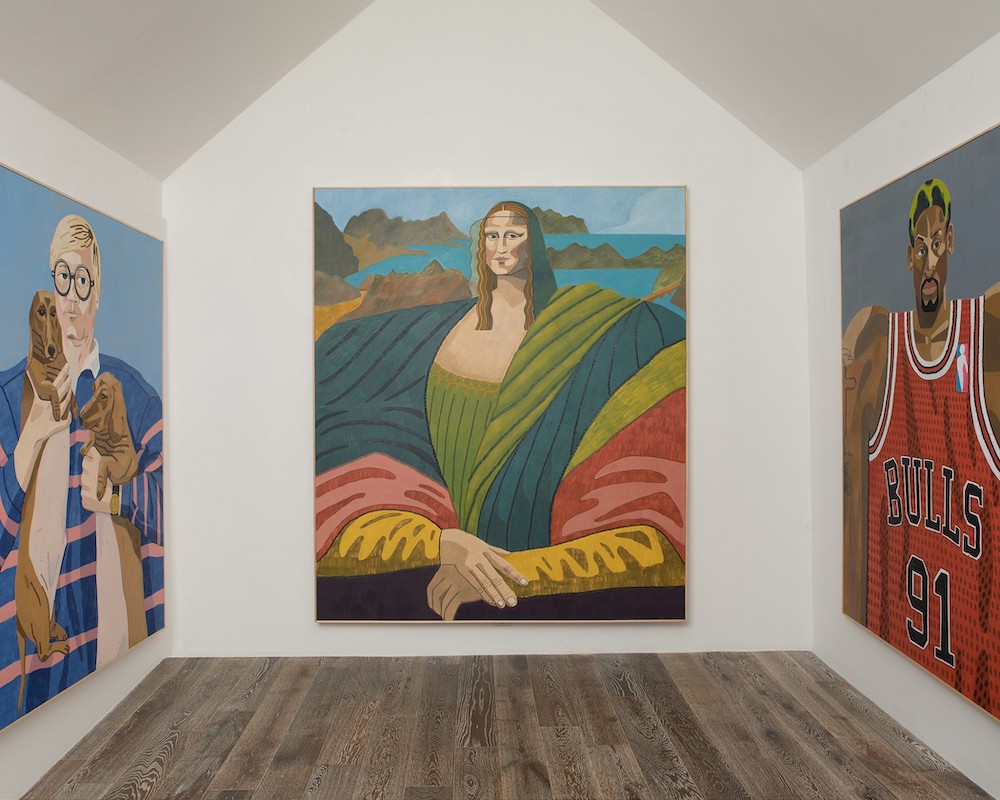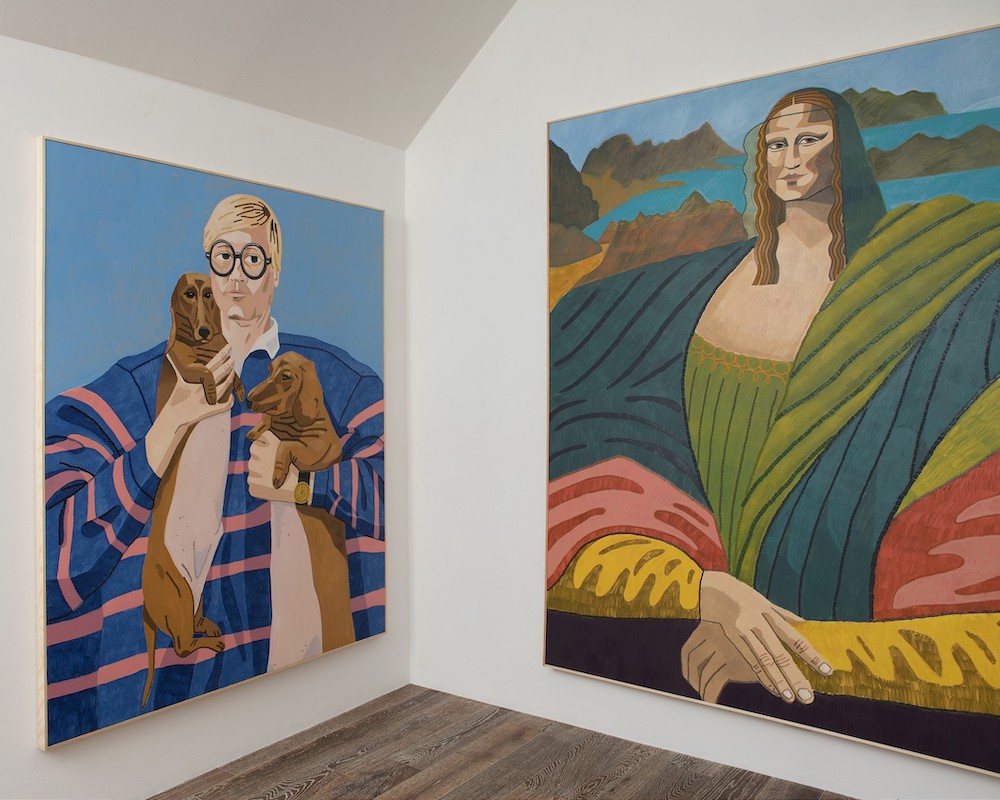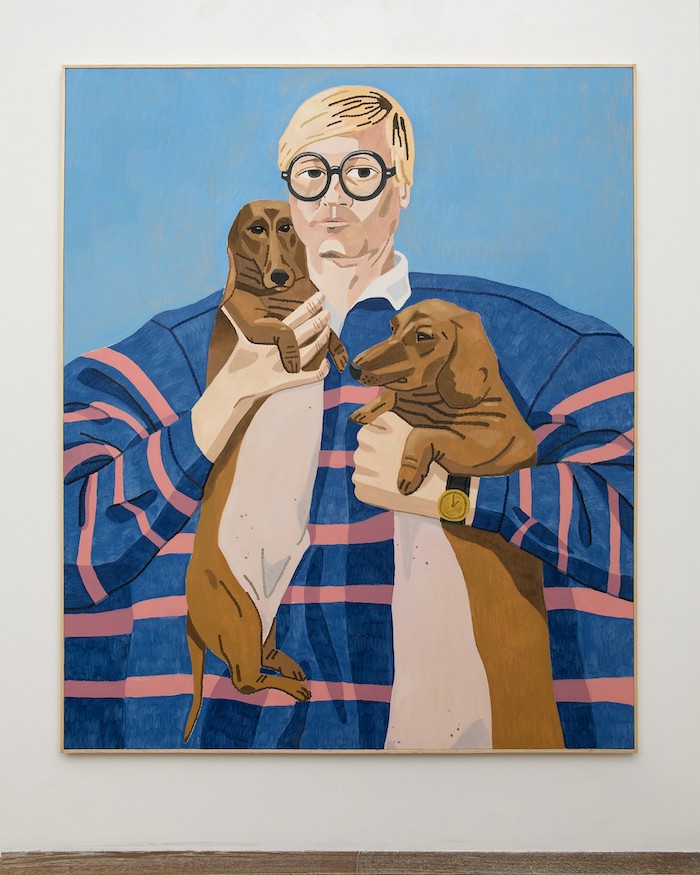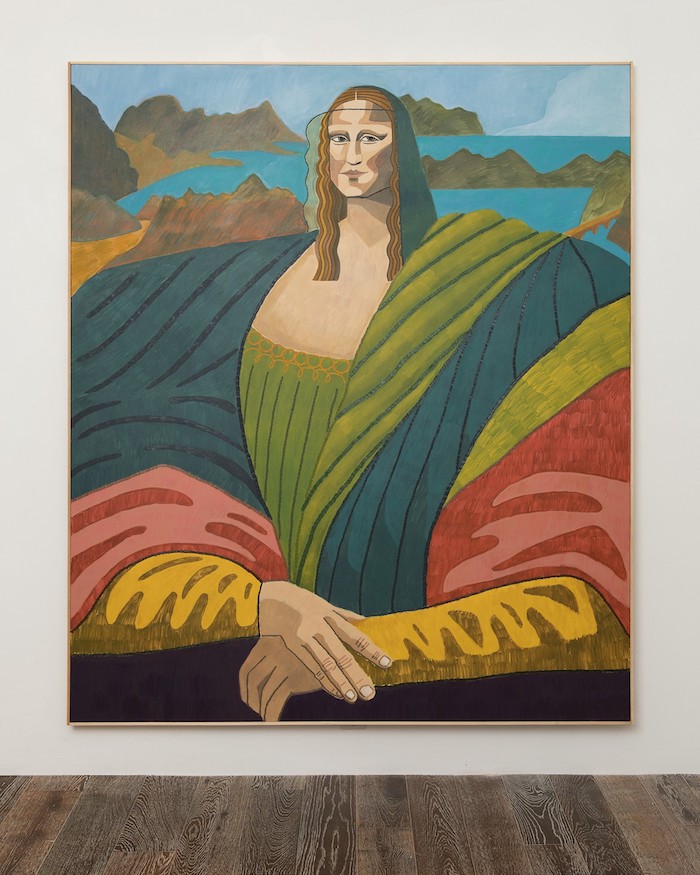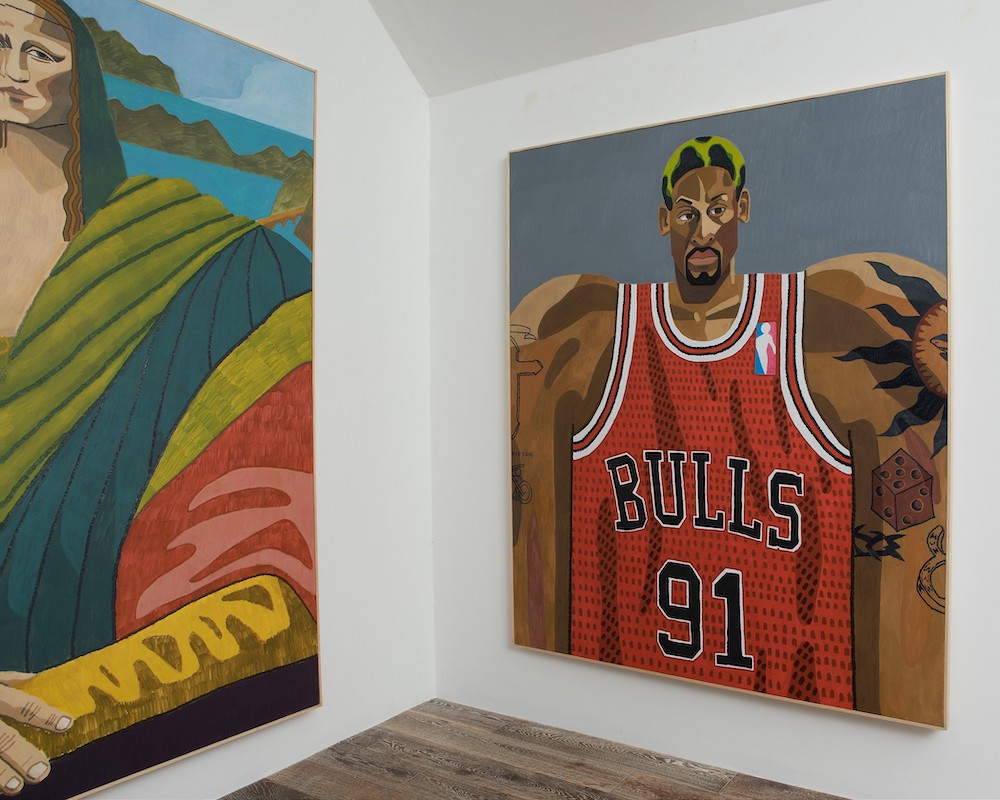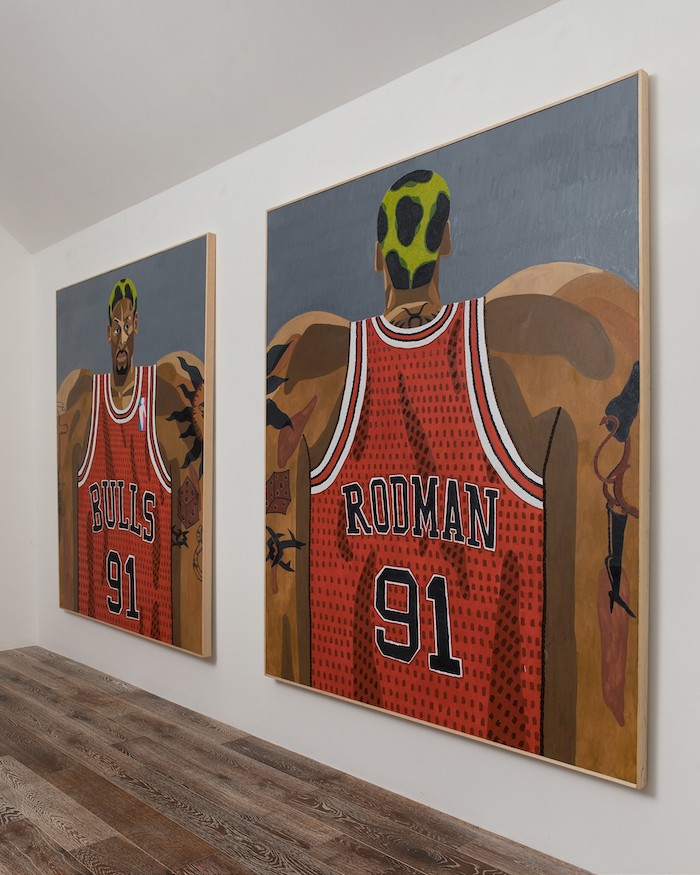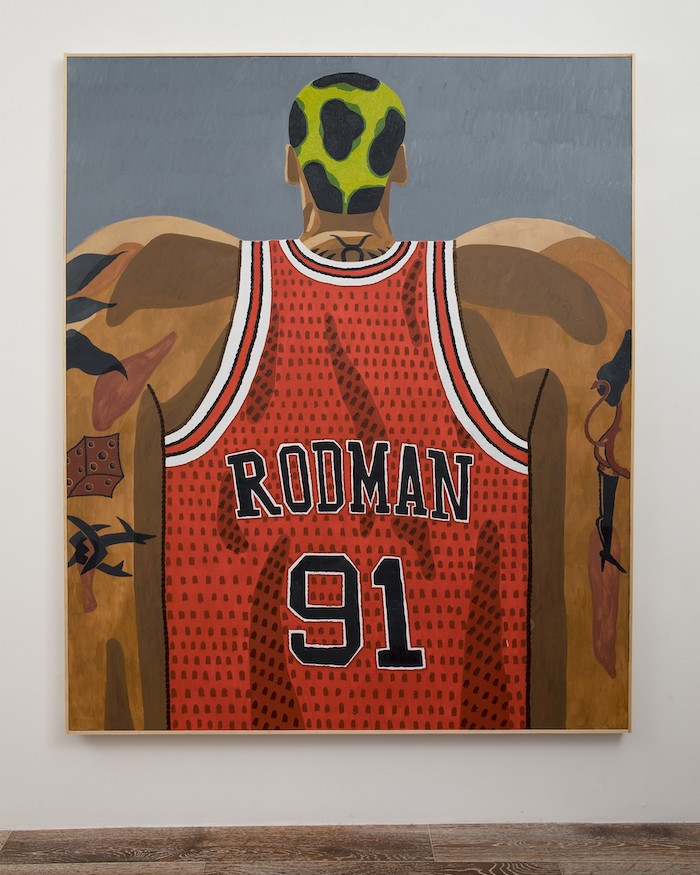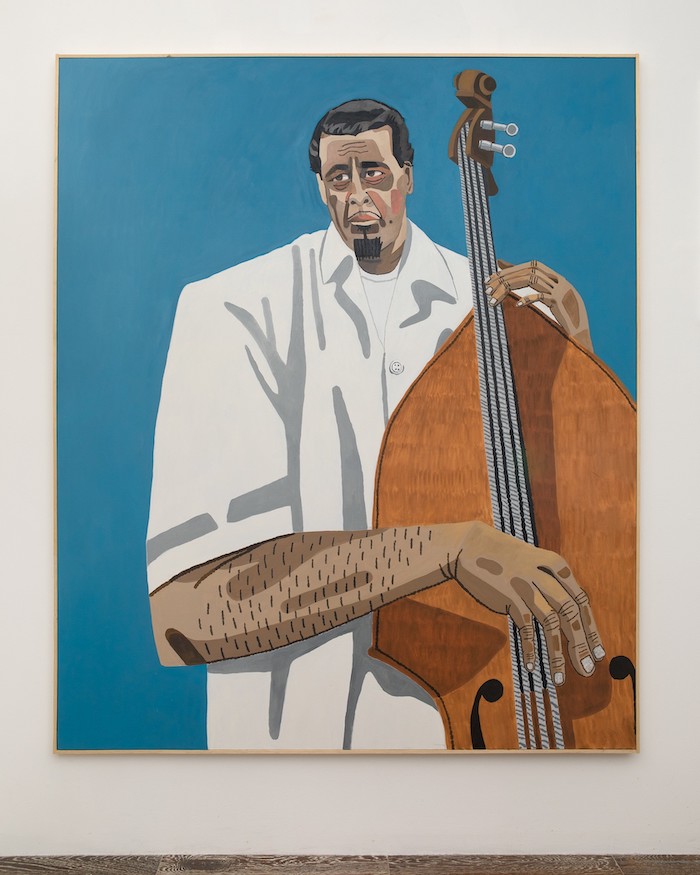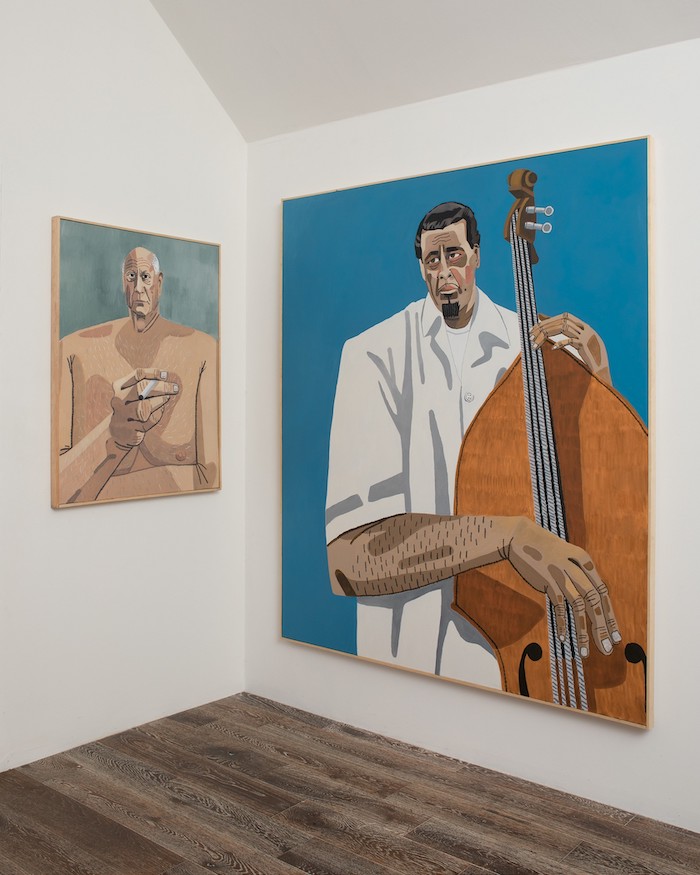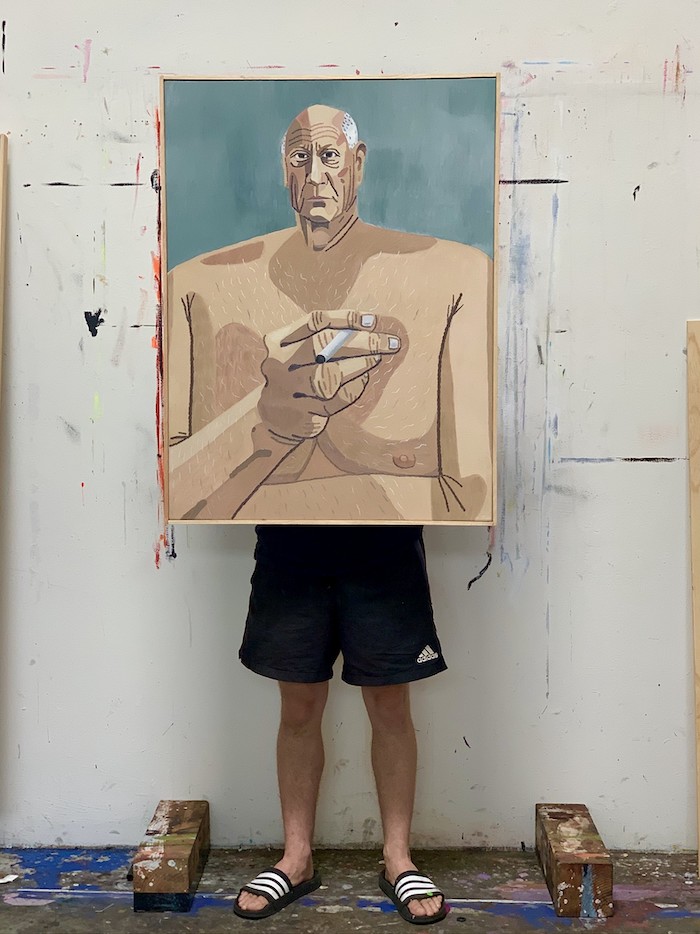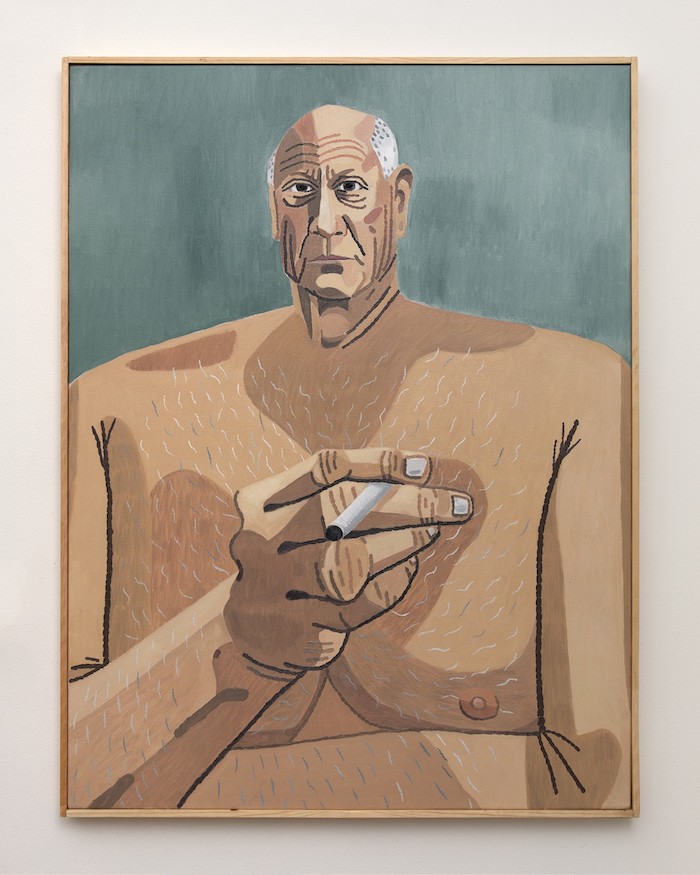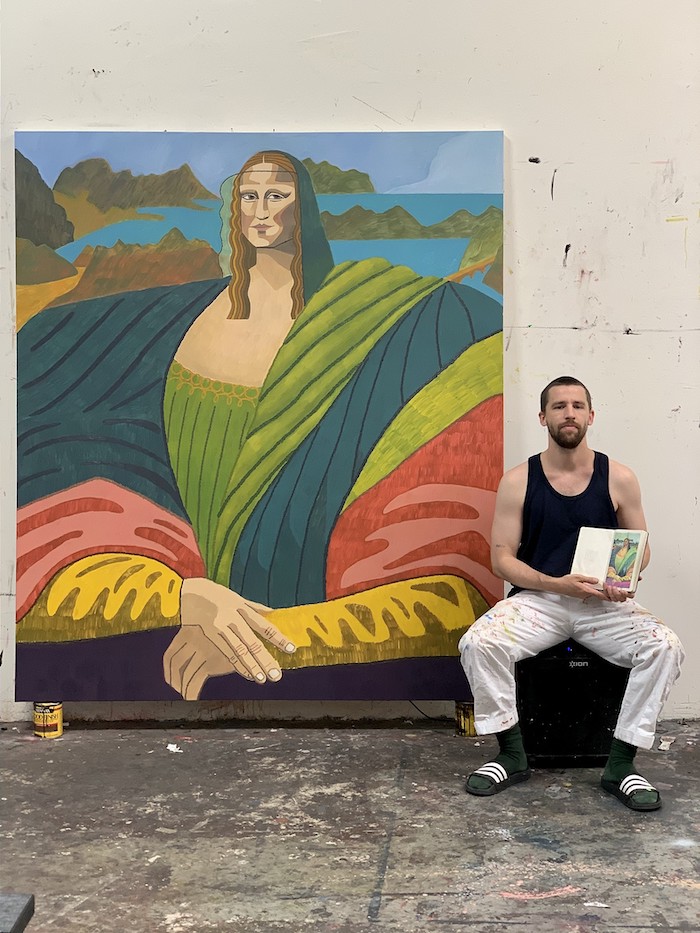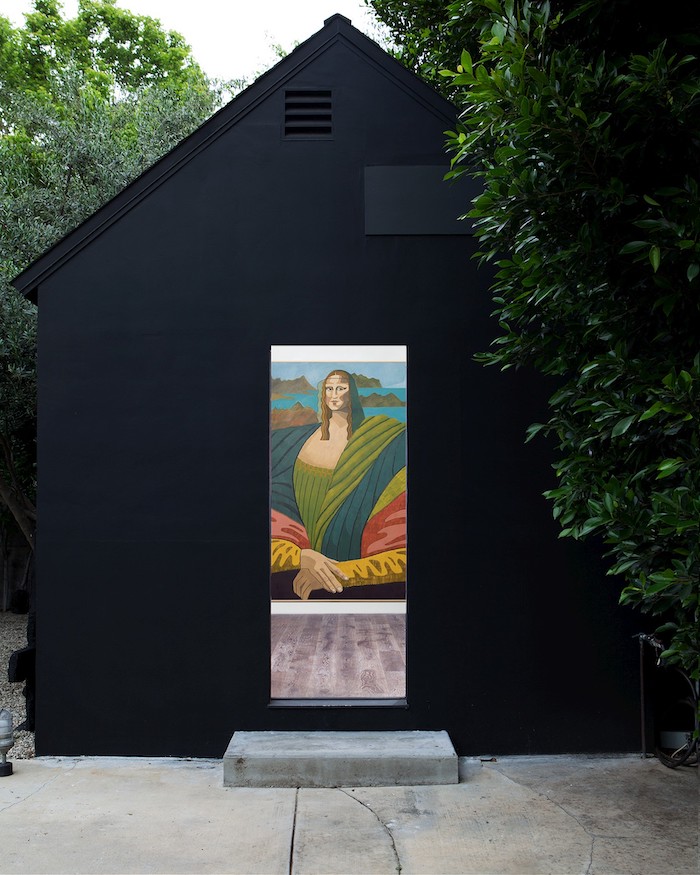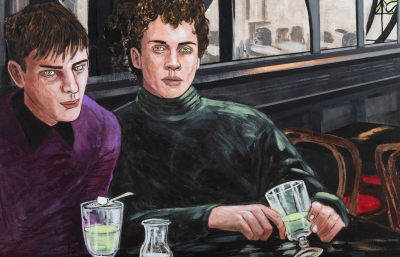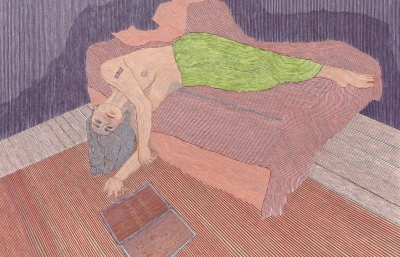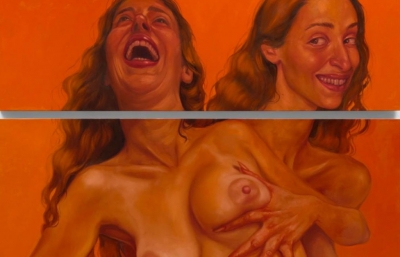With the hopeful spector of reopening, we're happy to see some of our favorite projects finding ways to proceed with their programs. One of them is The La Brea Studio Artists Residency which recently hosted the NY-based painter/graphic designer, Julian Pace.
For the mostly self-taught painter who continuously straddled between design and fine art, the abrupt changes forced by the pandemic merged into a more defined lane. In parallel with the six week long residence in California, the artist began to fully focus on his painterly practice, resulting in an impressive body of work recently revealed at The Cabin under a simple title, Some People.
Working within the beloved, archetypal format of classical portrait, Pace painted a series of large scale canvases portraying a wide range of real-life icons. From Mona Lisa to Picasso, to Hockney and Frida, all the way to Rodman and Kanye, the works rest on the broad shoulders of the artist’s background in graphic design, transferring onto the canvas with intuition and emotion. Each instantly recognizable, yet interpreted whimsically with powerful physical proportions, the series inspires lots of questions which we were happy to hear him answer in a conversation we had recently.
Sasha Bogojev: How many works are you showing?
Julian Pace: There are five pieces on view at The Cabin.
What makes you select a certain person or subject for a portrait?
My subject matter usually comes from my interests, which can be eclectic. It may come from a book I’m reading or someone or something that fascinates me.. It’s kind of a way to observe and record things. At the La Brea studio, I chose to do all portraits and mostly of artists who have inspired me - but I watched that Chicago Bulls documentary a couple weeks ago and I had to paint Dennis Rodman.
How did the wide shoulder-big torso-small head format come to be, and what do you like about it?
The style actually sort of came from a joke. I had done a couple of little paintings of some basketball players and my friend Jon, who is really into working out, made fun of their shoulders because they were non-existent. So I did another one just for him with wildly exaggerated boulders and I thought it looked pretty cool so I took it from there. Some are more inflated than others.
What are some of the challenges and advantages of working in a defined formula like that?
A challenge for me is monotony. Scaling up means I can get into more abstraction in the details; but my attention span is pretty short, so sometimes I just switch it up completely and paint still life or whatever catches my interest. Working with this format has also allowed me to pay homage to some of my favorite works in my own style. Like I did a big ol seven-foot-tall Mona Lisa that is on display facing the entrance of The Cabin. That one makes me smile too.
How did your stay at The La Brea Studio Artists Residency affect your usual practice or the work in general?
I had been focusing and working on my practice since I was laid off at the start of the COVID lockdowns. The La Brea studio gave me the opportunity to completely focus and continue to refine it. Before that, I was balancing painting with a full-time job that wasn’t really creative at all, so it was pretty slow going. I also work out of my bedroom in New York so space is obviously limited. Being in the studio allowed me to work on a much larger scale which was a game-changer. The whole experience was really life-changing.
How di theresidency routine different from your regular routine?
It was my first time in LA and I didn’t really know anyone so there were fewer distractions. Most days my routine was pretty simple. Wake up, eat breakfast, read then get to work.
What other shows/projects do you have coming up?
I have another residency in Pasadena sometime in September before I go back to New York. Then, hopefully, some things in the fall. Who knows? I take it one day at a time, but I’m really excited about the future.

